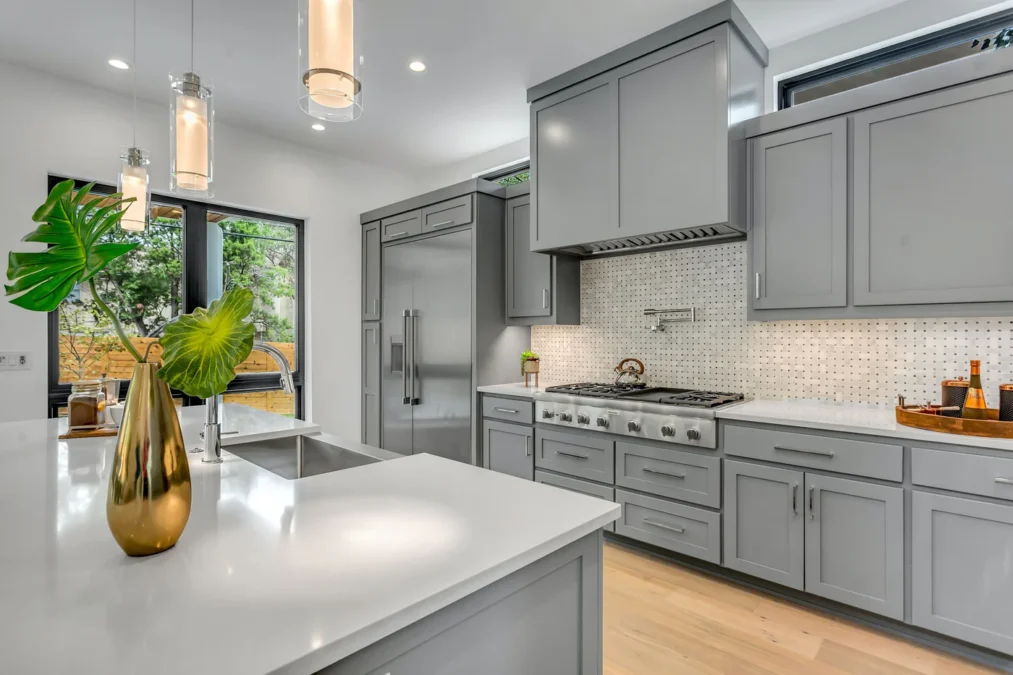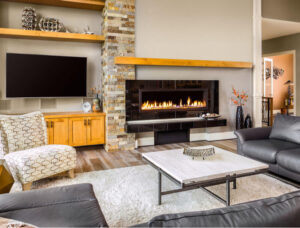Best Cabinet Paint: A Comprehensive Guide to Choosing and Applying the Perfect Paint for Your Cabinets?

Painting your cabinets is one of the most cost-effective and transformative methods when refreshing your kitchen or bathroom. Choosing the best cabinet paint can elevate the look of your space while ensuring durability and longevity. This article will explore everything you need to know about selecting and applying the best paint for cabinets, helping you achieve a flawless finish.
Why Choosing the Best Cabinet Paint Matters
Cabinets are high-traffic surfaces that endure daily wear and tear. Selecting the right paint is crucial for achieving a smooth, professional finish that withstands time and usage. The best cabinet paint offers:
- Durability: Resistant to chipping, peeling, and scratches.
- Easy Maintenance: Wipeable and resistant to stains.
- Aesthetic Appeal: High-quality finish in various colors and sheens.
Types of Paint for Cabinets
Understanding the types of paint available can help you make an informed decision. Here are the most common options:
- Latex Paint
- Advantages: Latex paint is water-based, making it easy to clean up and low in odor. It dries quickly and is available in a wide range of finishes.
- Disadvantages: It may not be as durable as oil-based paints for high-traffic areas unless a topcoat is applied.
- Oil-Based Paint
- Advantages: Known for its durability and smooth finish, oil-based paint is an excellent choice for cabinets.
- Disadvantages: Longer drying times and strong odors. Cleanup requires solvents like mineral spirits.
- Alkyd Paint
- Advantages: A hybrid option mimics oil-based paint’s durability but has the easy cleanup of latex paint. It’s often labeled as “cabinet and trim paint.”
- Disadvantages: Slightly higher cost compared to standard latex paints.
Key Features to Look for in the Best Cabinet Paint
When shopping for the best cabinet paint, keep an eye out for these features:
- Durability: Look for paints designed for furniture or cabinetry.
- Finish: Semi-gloss, high-gloss, and satin finishes work well for cabinets.
- Self-Leveling Properties: Ensures a smooth, streak-free application.
- Low VOC: Choose low-volatile organic compound (VOC) paints for a safer, eco-friendly option.
- Adhesion: Paints with strong adhesion eliminate the need for extensive priming.
Top Picks for the Best Cabinet Paint
Here are some of the top-rated cabinet paints on the market:
- Benjamin Moore Advance Interior Paint
- Features: Durable alkyd formula with self-leveling properties.
- Pros: Professional-grade finish, available in various sheens.
- Cons: Slightly higher price point.
- Sherwin-Williams ProClassic Interior Waterbased Acrylic-Alkyd
- Features: Combines the best of both latex and oil-based paints.
- Pros: Quick-drying, smooth finish, easy to clean.
- Cons: Requires proper surface preparation.
- Rust-Oleum Cabinet Transformations Kit
- Features: All-in-one kit designed specifically for cabinets.
- Pros: Includes a deglosser and protective topcoat, making it beginner-friendly.
- Cons: Limited color options compared to traditional paints.
- Behr Premium Cabinet & Trim Enamel
- Features: Self-leveling, durable water-based paint.
- Pros: Excellent coverage and affordable.
- Cons: It may require multiple coats for darker colors.
- Valspar Cabinet Enamel Semi-Gloss Latex Paint
- Features: Scratch-resistant and easy to clean.
- Pros: Affordable and widely available.
- Cons: It may require light sanding for optimal adhesion.
How to Paint Cabinets Like a Pro
Achieving a professional finish is as much about the preparation and technique as it is about choosing the best cabinet paint. Follow these steps:
Step 1: Gather Your Supplies
- Paint and primer (if needed)
- Sandpaper or a sanding block
- Degreaser or cleaner
- Painter’s tape
- Paintbrushes and rollers (foam rollers work best for cabinets)
- Drop cloths and gloves
- Screwdriver for removing hardware
Step 2: Prepare the Cabinets
- Clean the Surface: Use a degreaser to remove grease, grime, or dirt.
- Remove Hardware: Take off handles, knobs, and hinges to make painting easier.
- Sand the Surface: Lightly sand to create a surface the paint can adhere to.
- Wipe Down: Use a damp cloth to remove dust.
Step 3: Prime the Cabinets
Applying a primer ensures better adhesion and reduces the risk of peeling or chipping. Choose a primer compatible with your paint type.
Step 4: Apply the Paint
- Start with the Edges: Use a brush for corners and edges.
- Roll the Flat Surfaces: Foam rollers create a smooth, streak-free finish.
- Apply Multiple Thin Coats: Allow each coat to dry completely before applying the next.
Step 5: Seal with a Topcoat (Optional)
Apply a clear polyurethane topcoat for added durability, especially if using latex paint.
Tips for Choosing the Right Color and Finish
- Neutral Tones: White, gray, and beige are timeless choices that suit most decor styles.
- Bold Colors: Navy blue, emerald green, and black can dramatically affect modern kitchens.
- Finish Matters: Semi-gloss or satin finishes perfectly balance aesthetic appeal and easy maintenance.
Common Mistakes to Avoid
- Skipping surface preparation.
- Applying thick coats that lead to drips.
- Neglecting to let the paint dry completely between coats.
- Using the wrong type of brush or roller.
Conclusion
Choosing the best cabinet paint is essential for transforming your cabinets and enhancing your space. Whether you opt for a durable alkyd paint like Benjamin Moore Advance or a budget-friendly option like Behr Premium Cabinet & Trim Enamel, the right product can make all the difference. You can achieve a stunning, professional-quality finish that breathes new life into your kitchen or bathroom with proper preparation, technique, and patience. Happy painting!



